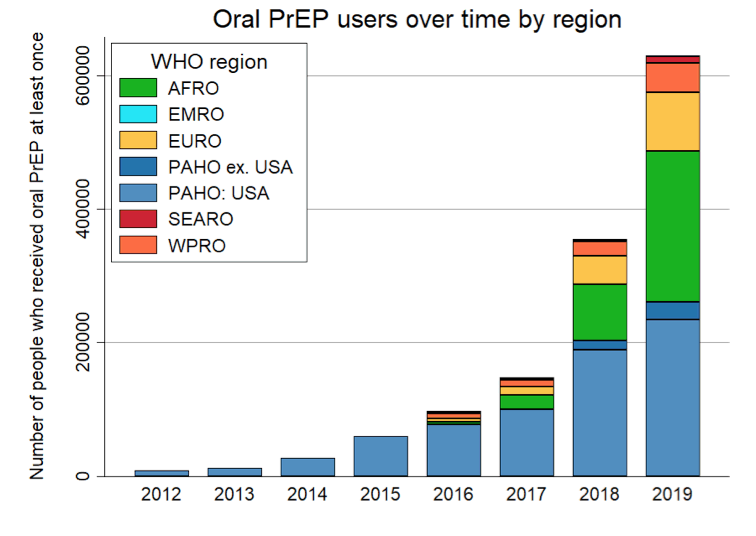| |
Global data shows increasing PrEP use and widespread adoption of WHO PrEP recommendations
|
| |
| |
Global PrEP Network Highlight - March 2021
16 March 2021
https://www.who.int/news-room/feature-stories/detail/global-data-shows-increasing-prep-use-and-widespread-adoption-of-who-prep-recommendations
----------------------------------------
Gilead and Merck Announce Agreement to Jointly Develop and Commercialize Long-Acting, Investigational Treatment Combinations of Lenacapavir and Islatravir in HIV - (03/15/21)
CROI: New PrEP at CROI 2021 - (03/11/21)
CROI: PHASE 1 PK, SAFETY, AND ACCEPTABILITY STUDY OF 3-MONTH DAPIVIRINE VAGINAL RINGS - (03/11/21)
CROI: Low New-HIV Rate With Both Daily and On-Demand PrEP in Paris MSM - - (03/10/21)
----------------------------------------------
Data compiled by the Global PrEP Network, shown in the Global State of PrEP shows that oral PrEP use has been increasing globally and over 600 000 people across 76 countries received PrEP at least once in 2019 - a 70% increase from 2018.

In 2015, when WHO recommended oral PrEP for people at substantial risk of HIV, PrEP use was largely limited to a few high-income settings, while now sizable numbers of PrEP users can be found in every region of the world. This increase in PrEP users coincides with the widespread adoption of WHO recommendations on PrEP in national guidelines. In 2015, only the USA and Norway had national PrEP recommendations. Within one year, 26 countries had adopted the recommendations into national guidelines. In 2019, there were 121 countries with the PrEP recommendations in national guidelines - 23 more than in 2018.
There is considerable scope for further rises in numbers of PrEP users. In this analysis, countries were considered to have adopted the WHO PrEP recommendations even if these were not yet implemented. The adoption of WHO PrEP recommendations into national guidelines is a key step towards PrEP service availability in a country, but it does not necessarily equate to implementation of PrEP services in all countries or for all populations at increased risk of HIV acquisition. Moreover, 22 countries reported that they plan to adopt WHO recommendations on PrEP in 2020 or 2021. Even where PrEP services have started to be rolled out, there is often a slow transition from demonstration and pilot projects to large-scale PrEP programmes. PrEP use may also be further expanded through introduction of new PrEP products, including long-acting injectable cabotegravir and the dapivirine vaginal ring, by offering potential users options other than a daily or event-driven oral PrEP.
Data for 2020 are currently being collected and validated and will be released later in the year. These data will provide more insight on the impacts of the COVID-19 pandemic on global PrEP use. While COVID-19 has disrupted access to PrEP services in some settings, available data suggest marked increases in PrEP use. For instance, PEPFAR reported over 300 000 new PrEP initiations in their priority countries in 2020. WHO has declared PrEP an essential health service that should be maintained during COVID-19 and suggested adaptations to programmes to mitigate disruptions of PrEP services. Such adaptations include multi-month dispensing of PrEP, HIV self-testing, use of telemedicine, and other forms of community-based PrEP delivery, which have been widely adopted during COVID-19 restrictions (e.g. in Thailand and Brazil). These adaptations have the potential to simplify and differentiate PrEP services to reach more people that could benefit from PrEP beyond COVID-19.
|
|
| |
| |
|
|
|